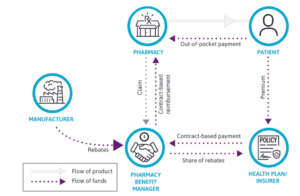Life Insurance Blood Tests: What To Expect and How To Prepare

A medical exam, complete with comprehensive blood tests, is an essential part of most life insurance applications. Insurers use the information from the exam and blood tests to determine whether to accept your application and how much they will charge you in monthly premiums.
The life insurance medical exam is performed by a paramedical professional from a third-party company the insurer works with regularly. It’s paid for by the insurer and can be done in the location of your choosing (usually work or home).
What is a life insurance blood test?
A blood test is a standard part of the life insurance medical exam. It’s performed by the same examiner who conducts the overall medical exam. The purpose of the blood test is to check for underlying diseases, health issues, and drug use. The results give the insurer a clear picture of your current health. They also offer insights into potential health problems that may arise in the future.
Additionally, the life insurance blood tests allow the insurer to check that the information you provided on the written application is accurate. If the results from your blood tests and the details you provided on your application don’t match up, it can raise a red flag.
When you agree to the blood test, you agree for the results to be delivered to the insurance company providing the policy.
Why do insurance companies request blood tests?
Health plays a big factor in determining whether you can qualify for life insurance and at what rates. Medical records illustrate your medical history and an examiner can record basic things like height, weight, and blood pressure. But blood tests give the insurer the most accurate, current insights into your health situation and potential medical conditions.
Every individual’s health is important to insurers because the entire life insurance business model is based on the concept of risk. Life insurance pays out a death benefit to the beneficiaries of your policy if you die during your term. The life insurance company does not want to pay out—after all, that’s how it loses money. So when the insurer vets applicants, it prefers those who present the least risk of dying during their term.
To help determine which applicants pose the greatest and least risk to the company, insurers use a list that rates each individual to a unique health class: Preferred Plus, Preferred, and Standard are some common classes, though each insurer has its own particular name for its class ratings. People who smoke are in an entirely different rating system.
Insurance underwriters review the results of your medical exam and blood tests to determine which class you should be put into. If you’re in great health, they’ll put you in the highest class—and give you the lowest premiums. If you’re in pretty bad shape, you’ll be put in the lowest class—and get very high premiums. If the underwriters determine that your health is really bad, they can recommend that the insurer reject your application altogether.
How life insurance blood tests work
When you find a life insurance policy that you want, you’ll need to fill out an application that includes detailed questions about your health. Once you submit it to the insurer and receive the go-ahead to schedule an exam, you’ll be given the option of several dates and times to do so.
The exam usually takes between 20 to 30 minutes, and many people choose to schedule it at their workplace or at home. The cost of the exam is covered by the insurance company, so you don’t have to pay anything out of pocket. It can take between a few days to a few weeks to get the results.
During the exam, you’ll be asked simple health questions (many of which were already covered in the written application). The examiner will measure your height and weight, take your blood pressure, and draw a blood sample. You’ll also be asked to submit a urine sample. In some cases, based on the information you provided on the written application, the insurer will ask you to undergo an EKG. This usually adds an additional 20 minutes to the exam, but it’s fairly standard and no cause for alarm.
Preparing for the blood tests
Preparing for your blood test is simple and doesn’t require a lot of effort. There are a few things, however, that may be counterintuitive, so we’ve prepared this list of tips to help you get ready.
Fast: You’ll need to fast between 8 to 12 hours before your blood test, which is why many people prefer to schedule it for early in the morning.
Drink plenty of water: being hydrated can help dilute sugar and protein concentrations, as well as flush out toxins from your body.
Bring your application: If you get nervous around needles, it can be a good idea to print out the written application that you filled out and bring it with you. This way, you’ll have all your basic health information in front of you and won’t forget it due to nerves.
Bring ID: You should make sure to have your driver’s license or other valid ID to present to the paramedical professional.
Avoid over-the-counter meds: Since one of the things the insurance company looks for is drug use, you should avoid taking decongestants, over-the-counter cold and flu medications, and diet pills. These can result in false positives for illegal drugs.
Avoid substances that affect blood pressure: Other things to avoid include alcohol, caffeine, and nicotine, as these can all affect blood pressure. Bear in mind that avoiding nicotine for one day will help with your blood pressure results, but it won’t erase evidence of nicotine in your bloodstream if you’re a frequent smoker.
No strenuous exercise: Although regular cardio exercise is healthy, you should avoid it before your exam, since this too can affect your blood pressure.
Sleep: Make sure to get enough sleep the night before your exam. According to the Mayo Clinic, “People who sleep six hours or less may have steeper increases in blood pressure.”
If you wake up on the morning of your exam and don’t feel good, we recommend rescheduling to another time. While it may be just a cold, you don’t know whether it will adversely affect the results of your blood test and entire exam.
What are the life insurance blood tests?
Life insurance blood tests check for a litany of issues and illnesses that can only be seen by examining your blood. Below is a comprehensive list of what insurers test for.
Cholesterol
The life insurance blood test will show your total cholesterol level as well as your HDL (the “good” kind of cholesterol) and LDL levels (the “bad” kind). Insurers will likely place you in a higher risk class if your numbers are not in the normal range. A healthy ratio of your total cholesterol to HDL is 5.0 and under. A ratio higher than 5.0 indicates potential heart disease.
Nicotine
The blood test will show traces of nicotine in your bloodstream. Smoking status is a major factor the underwriter considers when calculating your life insurance premiums. Smoking is considered so dangerous that smokers have their own categories when it comes to life insurance health classes. If there are 2 seemingly identical people—same age, gender, weight, height, location, etc.—but one smokes (or uses other tobacco products) and one doesn’t, the smoker will always get higher life insurance rates.
Diabetes
According to the CDC, more than 34 million people in America have diabetes, but 1 in 5 don’t even know they have it. This highlights one reason why the life insurance blood test is so important—it can reveal health conditions you never knew you had. While you can still get life insurance if you have diabetes, you will likely get higher rates. The type of diabetes you have and the way you manage it will play a role in determining your exact rates.
Hemoglobin A1C, glucose levels
These factors measure your risk for diabetes, which insurers may take into account given your weight, BMI, family health history, and current lifestyle.
HIV or AIDS
While AIDS is no longer considered a death sentence the way it once was, it’s important for insurers to know whether you have the virus, and what you’re doing to manage it. Many insurers will still approve your life insurance application if you have HIV or AIDS as long as you show that it’s under control. However, you will likely be charged higher premiums.
STDs
A blood test will show if you have any STDs. Like AIDS, insurers are not likely to deny coverage based solely on this issue, but they may charge higher premiums.
Kidney disease
Life insurance blood tests will check several aspects related to kidney disease. Your BUN, Blood Urea Nitrogen score, can be an early sign of kidney disease. Additionally, the blood tests look at your creatinine levels, leukocytes, and hemoglobin, all of which can indicate kidney disease.
Liver disease
Many factors can affect liver function. For this reason, there are blood tests that look into liver enzymes to check several things: alkaline phosphatase levels, total bilirubin, AST (Alanine Aminotransferase), ALT (Alanine Aminotransferase), GGT Gamma Glutamyl Transpeptidase, protein, albumin, and globulin. Additionally, the blood tests will reveal if you have any type of hepatitis, a disease that affects the liver.
Illegal substances
Life insurers can deny coverage if the blood tests reveal the presence of illegal substances in your bloodstream.
Legal substances (prescription medications)
Insurers want to know what legal medications you take since many come with side effects and reflect current health conditions. If you forget to mention a prescription you’re taking (or purposely neglect to mention it), the blood test will reveal it. Some medications, like addiction treatment drugs, opioids, and benzodiazepines, raise red flags for insurers. While using these won’t guarantee rejection, they will likely cause underwriters to more closely examine your application.
Note: it’s important to remember the while these blood exams are a big part of the medical exams required by the insurance companies, there may be other exams you’ll be asked to perform such as urine tests (to detect possible kidney issues)
Accessing the results of your life insurance blood tests
When you agree to undergo a life insurance medical exam and blood tests, you agree that the results can be sent to the life insurance company. However, they can’t be passed around for everyone to see. HIPAA laws restrict access to your results to several people in the company who need them to calculate your life insurance rates.
If you want to see the results for yourself, you can ask the paramedical company to send them to you or request access to an online portal so you can check the results yourself. Being able to get your results is important, especially if the insurer puts you in a lower health class. If you have access to your results, you can understand why.
Can you get life insurance without a blood exam?
If you’re worried that you’re not well enough to get approved for life insurance if you undergo a medical exam and blood test, or if you’re scared of needles, there is a way to avoid the entire process. No exam life insurance is a specific type of policy that allows you to bypass the exam entirely and still get coverage.
No exam life insurance is also chosen by people who need life insurance quickly and conveniently. Since the underwriting process is instant or non-existent, applications are approved fast. However, if you are a healthy person and aren’t in a rush, you can usually get better rates with traditional life insurance that requires a medical exam.





